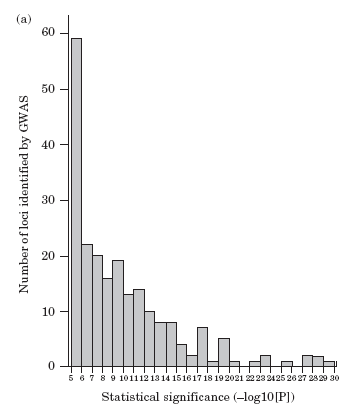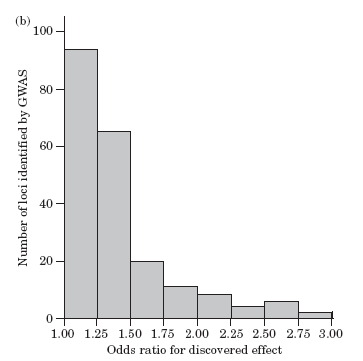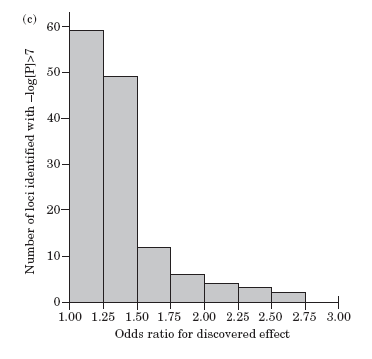Chapter 12 - Genome-wide association studies, field synopses, and the development of the knowledge base on genetic variation and human diseases Figures
This website is archived for historical purposes and is no longer being maintained or updated.
Human Genome Epidemiology (2nd ed.): Building the evidence for using genetic information to improve health and prevent disease
necessarily represent the views of the funding agency.”
Muin J. Khoury, Lars Bertram, Paolo Boffetta, Adam S. Butterworth, Stephen J. Chanock, Siobhan M. Dolan, Isabel Fortier, Montserrat Garcia-Closas, Marta Gwinn, Julian P. T. Higgins, A. Cecile J. W. Janssens, James M. Ostell, Ryan P. Owen, Roberta A. Pagon, Timothy R. Rebbeck, Nathaniel Rothman, Jonine L. Bernstein, Paul R. Burton, Harry Campbell, Anand P. Chokkalingam, Helena Furberg, Julian Little, Thomas R. O’Brien, Daniela Seminara, Paolo Vineis, Deborah M. Winn, Wei Yu, and John P. A. Ioannidis
Figures 12-1



(a) Levels of statistical significance for associations of loci with p-value of 10–5 or lower identified through GWAS and entered in the catalog of GWAS as of October 14, 2008 (41,42) and limited to those that have binary phenotypes (n = 223). For details on selection of loci in the catalog see References 41 and 42. (b) Odds ratios (per allele) for the 223 associations. (c) Odds ratios for 142 of the 233 associations that have p < 10–7. Not shown are 5, 13, and 7 outliers that had values outside the depicted range in the three panels respectively.
Figure 12-2
A vision for collaboration among disease- and gene-specific investigators, systematic reviewers, and online publishers. HuGENet, Human Genome Epidemiology Network; HVP, Human Variome Project; P3G, Public Population Project in Genomics

- Page last reviewed: January 6, 2010 (archived document)
- Content source:


 ShareCompartir
ShareCompartir